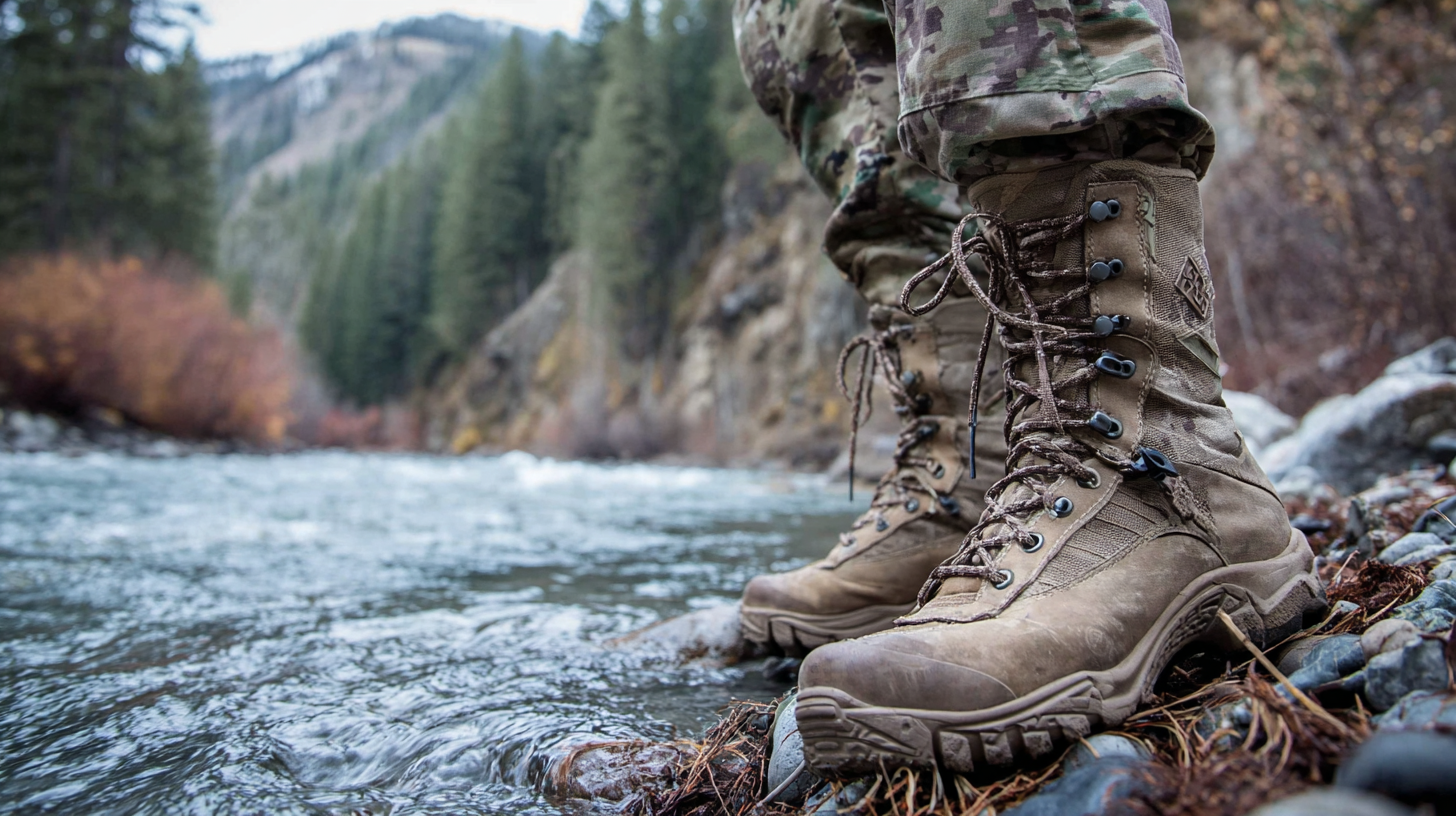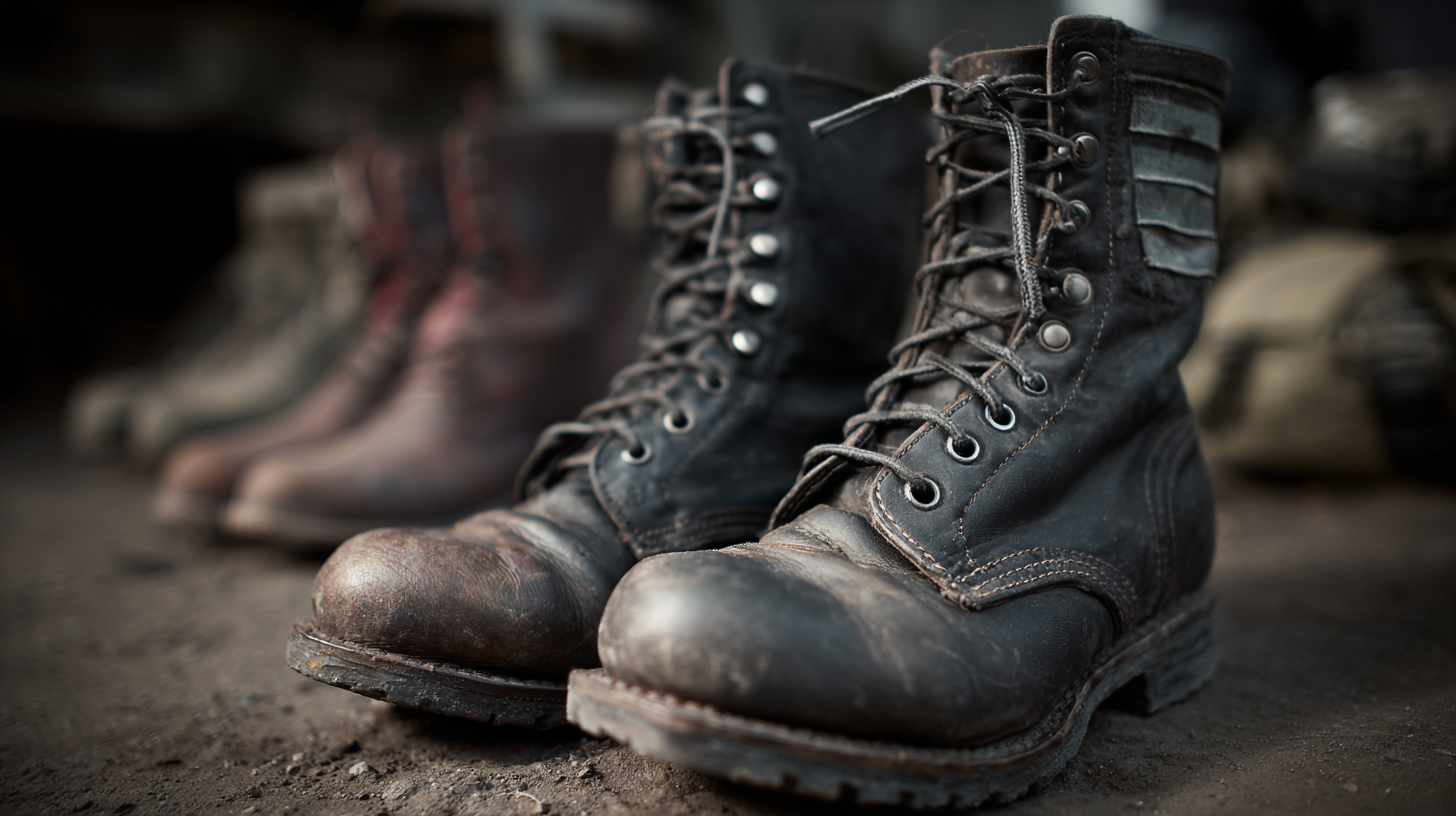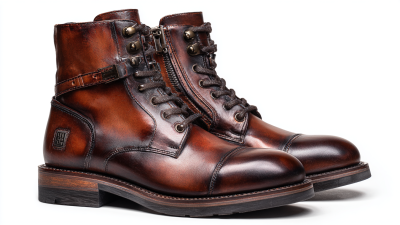How to Choose the Perfect Combat Boots for Every Adventure
When embarking on an adventure, having the right gear can make all the difference, and one of the most essential components is a pair of high-quality combat boots. According to industry reports, the global footwear market is expected to reach $370 billion by 2027, with combat boots increasingly recognized for their versatility and durability across various activities. These boots are not just for military personnel; they have become a staple for outdoor enthusiasts, fashion-forward individuals, and workers who require reliable footwear. A study from MarketWatch highlights that the tactical boot segment alone is projected to grow substantially, driven by rising demand for fashionable yet functional footwear. Understanding how to choose the perfect combat boots tailored to your specific adventures can enhance both performance and comfort, ensuring you’re equipped to tackle any challenge the great outdoors presents.

Understanding the Different Types of Combat Boots for Various Activities
When selecting combat boots for various activities, it's essential to understand the different types available to meet specific needs. For outdoor adventures, look for boots with features like waterproofing and durable materials, which ensure warmth and protection against the elements. Combat boots designed for girls and boys often incorporate fun designs and functional elements such as zippers, making them both fashionable and practical for children's activities.
Additionally, consider the biomechanical effects of different boot styles. Various combat boots can significantly influence lower limb biomechanics, affecting muscle activation during movement. This is especially pertinent for activities involving running or walking, where proper support and fit are crucial for injury prevention.
Opting for boots that provide excellent traction and stability will enhance comfort and performance during your adventures, making the right choice not only stylish but also supportive.
Key Features to Consider When Selecting Combat Boots for Durability and Comfort
When selecting combat boots, durability and comfort are paramount for adventurers seeking performance in rugged environments. A key feature to consider is the material; high-quality leather and advanced synthetic fibers are preferred for their strength and water resistance. According to a report by the Footwear Distributors and Retailers of America (FDRA), boots made from full-grain leather can last up to five times longer compared to their synthetic counterparts in extreme conditions. Additionally, look for boots with reinforced toe caps and padded collars, as these features significantly enhance support and protection during prolonged wear.
Another critical aspect to examine is the sole construction. Opt for boots that utilize Vibram or similar high-traction rubber soles, which offer superior grip on various terrains. Industry studies show that boots equipped with shock-absorbing midsoles can reduce foot fatigue by 20%, an essential factor for those engaging in long hikes or demanding missions. Furthermore, the fit is crucial; a good pair of combat boots should provide ample space for the toes while maintaining a snug fit around the heel to prevent blisters. Ensuring the right features align with your specific adventures will lead to a more enjoyable and successful experience in the great outdoors.
How to Choose the Perfect Combat Boots for Every Adventure - Key Features to Consider When Selecting Combat Boots for Durability and Comfort
| Feature | Description | Importance Level |
|---|---|---|
| Material | Choose leather or synthetic materials for balance between durability and weight. | High |
| Sole Type | Look for rubber soles for traction. Vibram soles offer superior grip. | High |
| Water Resistance | Consider waterproof membranes to keep feet dry in adverse conditions. | Medium |
| Comfort | Look for cushioned insoles and adequate padding around the ankle. | High |
| Weight | Lighter boots reduce fatigue on long treks but ensure they are still durable. | Medium |
| Ankle Support | High tops offer better ankle support, reducing risk of injury during activities. | High |
| Breathability | Look for mesh fabrics or vents to prevent overheating and moisture build-up. | Medium |
Exploring Material Choices: Leather vs. Synthetic for Combat Boot Performance
When choosing combat boots, the material plays a crucial role in determining performance and comfort. Leather and synthetic options each offer unique advantages tailored to different adventures. Leather is renowned for its durability, breathability, and ability to conform to the wearer's foot over time. It provides excellent protection against abrasions and is water-resistant when properly treated. These characteristics make leather boots ideal for rugged terrains and prolonged use, offering a classic aesthetic and a sense of tradition.
On the other hand, synthetic materials such as nylon and polyester present a lighter, more flexible alternative that often comes with enhanced moisture-wicking properties. These boots tend to dry faster and provide superior ventilation, which can be essential during warm weather or high-activity situations. Additionally, synthetic options are usually more affordable and can come with advanced features like waterproof membranes, making them versatile for various conditions. Ultimately, the choice between leather and synthetic combat boots depends on the specific requirements of the adventure ahead, balancing durability, comfort, and environmental factors.

Sizing and Fit: How to Ensure the Best Comfort for Long-Term Wear
When choosing combat boots, sizing and fit play a crucial role in ensuring comfort, especially for long-term wear during various adventures. First and foremost, it’s essential to measure your feet accurately. Stand on a flat surface with your weight evenly distributed on both feet, and use a ruler or a measuring tape to measure the length from heel to toe. This will help you determine the correct size, but keep in mind that different brands may have slight variations in sizing, so always check their specific size charts.
Another critical aspect to consider is the width of the boot. Combat boots typically come in different widths such as standard, wide, and extra-wide. A proper fit should allow your toes to wiggle while providing snug support around the heel. Additionally, trying on boots with the type of socks you plan to wear is vital. This will ensure that the fit is accurate and that you won't experience discomfort from friction or pinching during long walks or hikes. Finally, remember that breaking in your boots gradually can help enhance their comfort and adaptability to your feet over time.

Examining Industry Standards and Certifications for Quality Combat Boots
When it comes to selecting combat boots, understanding industry standards and certifications is paramount for ensuring quality and performance in various environments. Key certifications such as ASTM (American Society for Testing and Materials) and MIL-SPEC (Military Specification) provide benchmarks for durability, slip resistance, and comfort. These standards ensure that the boots can withstand rigorous use, protect against the elements, and offer crucial support during extended wear. Knowledge of these certifications can guide consumers to make informed choices that align with their specific needs.
Moreover, other features to consider include waterproofing, breathability, and insulation, which greatly enhance the usability of combat boots in different climates. Boots equipped with Gore-Tex membranes offer excellent waterproofing while still allowing sweat to escape. Additionally, insulation ratings indicate how well a boot can keep feet warm in colder conditions. By examining these industry standards and features, adventurers can find the ideal combat boots tailored to their activities, ensuring comfort and reliability no matter the challenge.
Combat Boots Quality Standards Comparison
Related Posts
-

Top Strategies for Sourcing Durable Combat Boots: Trends and Market Insights for Global Buyers
-

Exploring the Best Combat Boots Alternatives for Ultimate Comfort and Performance
-

Craftsmanship Redefined Chinese Excellence in the Best Combat Boots for Global Service
-

Overcoming Common Challenges with the Best Quick Rucksacks for Your Adventures
-

Exploring Top Alternatives to the Best Mens Combat Pants for Every Adventure
-

Navigating the Best Training Belts in 2025 Trends and Tips for Optimal Performance
